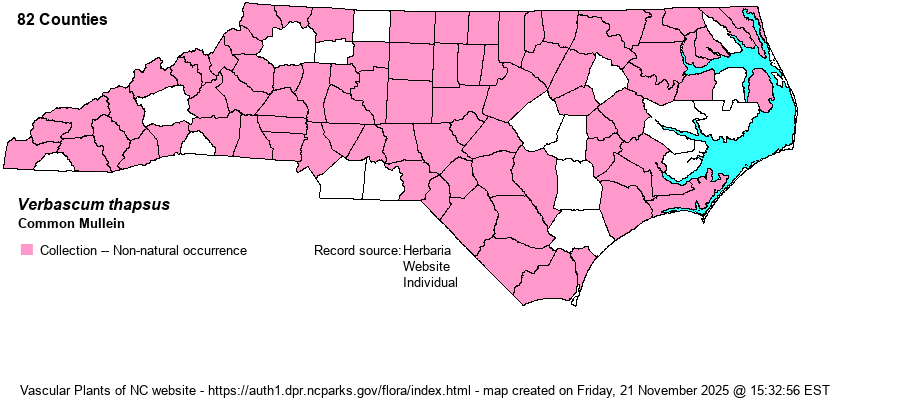| Author | L. | |
| Distribution | Throughout the state; probably in every county.
Native of Europe; in N.A. throughout the US and most of Canada. | |
| Abundance | Common throughout, except uncommon in the Sandhills proper. | |
| Habitat | A wide variety of disturbed sites, such as fields, meadows, pastures, barnyards, campus weed, roadsides, railroads, waste ground, granitic flatrocks, rock outcrops. | |
| Phenology | Flowering and fruiting May-September. | |
| Identification | This familiar plant grows from a basal rosette of large elliptical leaves that taper to the base. The stems can reach 6-7 feet tall but are usually less; the leaves are progressively smaller up the stem. The stem and leaves are densely tomentose with woolly hairs that impart a gray-green color to the plant. The inflorescence is terminal, thick, and unbranched, with the large yellow flowers without spaces between them. | |
| Taxonomic Comments | | |
| Other Common Name(s) | Woolly Mullein, Great Mullein | |
| State Rank | SE | |
| Global Rank | GNR | |
| State Status | | |
| US Status | | |
| USACE-agcp | FACU link |
| USACE-emp | FACU link |

